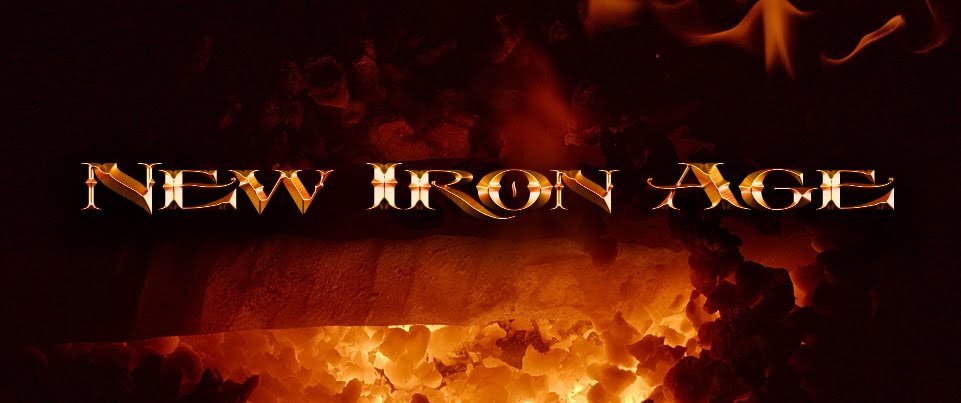If
we are talking about the origins of Sword & Sorcery fiction, then
we have to talk about horror, and if we are talking about where that
came from in the beginning and how it wove itself into the DNA of the
genre, then we have to talk about Howard Phillips Lovecraft.
Lovecraft
was an almost unknown writer in his lifetime, like many of the giants
of the pulp era, his influence spread and became almost ubiquitous
only after his death. In the realms of horror, only Poe casts a
longer shadow, and in many ways, in this modern era, Lovecraft’s
influence is far more pervasive.
The
man himself has become a controversial figure in recent years, and
modern readers are less willing to overlook his snobbishness and
racism than previous generations. But his work and his ideas about
horror remain embedded in modern fiction, impossible to get away
from. On his own, Lovecraft broke away from the Victorian,
drawing-room notions of horror and focused on larger ideas. Those
ideas, and that focus, worked their way into the bones of Sword &
Sorcery via the US Postal service, in his long correspondence with
Robert Howard.
Because
horror is a part of the S&S genre, but horror of a particular
kind. It is not the horror of haunted houses or madwomen locked in
attics. In particular it was Lovecraft’s ideas about ancient
horror and his fascination with antiquity that most informed Howard’s
work and thus the entire field.
For
despite the fact that Lovecraft took to very modern ideas about
supernatural beings who might, in fact, be aliens, his focus was not
on the future, as a science-fiction writer’s might have been.
Instead he took his fascination with astronomy and wove that to his
interest in all things ancient, and in a twisted way prefigured all
the “chariots of the gods” nonsense from later decades. For he
envisioned a world that had begun as a place inhabited by alien
beings, creatures so different from modern conceptions of biology
that we could not even comprehend them. The central tenet of his
mythos was that once these creatures ruled the earth, and that they
would again.
It
would seem like this kind of antihuman, rather defeatist idea would
not have appealed to Bob Howard, and indeed, he just took from it
parts that he could use. In his tales such as “The Shadow
Kingdom”, “Children of the Night” and “The Valley of the
Worm” Howard drew on the vast antiquity and inhuman creatures of
the Lovecraftian universe and then used them to create haunting ruins
and formidable antagonists for his relentless characters.
This
worked a fundamental change in Lovecraft’s ideology. In his world,
the monster-gods of the past would someday come and destroy us all.
In Howard’s hands the ancient monsters and nonhuman races could be
killed, and so they were. In “The Valley of the Worm” his
primordial hero sacrifices his life to slay the slithering being once
worshiped as a god. In “The Garden of Fear” another stone-age
protagonist does battle with the last remnant of an inhuman winged
race, and in “The Tower of the Elephant” such an otherworldly
being is treated with sympathy and feeling in a way Lovecraft never
dreamed.
For
that is the difference between the horror of a true horror story, and
the elements of horror that we find in Sword & Sorcery fiction.
In S & S, the ruin is there to be explored, the monsters there to
be slain, the evil there to be overcome. The heroes of the genre do
not lie back and wait for their doom, they go forth with sword in
hand to do battle, even if it means their death. Lovecraft’s
scholarly heroes dissolve into madness at the sight of the elder
beings that lurk in the shadows, while the characters Howard wrote
take down their ancestral broadsword and go out swinging.
It
is a difference that lies at the very heart of the genre. Sword &
Sorcery heroes are active. They do not wait for their end, they do
not accept anything as inevitable, they fight. They may know they
face a grim death, they may know they cannot win, but they will
fight.
Retiring,
introverted, racist and class-conscious, Lovecraft never saw the open
vistas or the raw frontier lands that really inspired Sword &
Sorcery. Telling that a man who lived his life in a long-settled
city and believed in limits and rules created a mythology marked by
helplessness and inevitability, while in the post oaks of Texas his
pen-pal created a mythology of adventure and open horizons. The two
men influenced each other greatly, never met, and died less than a
year apart. Howard died by his own hand, but it was not Lovecraft’s
nature to take control of his life that way. He died of stomach
cancer in 1937. He lived, and died, the way he felt a proper
gentleman should.


